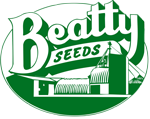
Combine Clean-Out Procedures
Combine must be thoroughly cleaned and inspected prior to harvesting Food Grade and Identity Preserved crops, even when hiring a custom combine. Combine clean-out procedures are as follows:
- Run the combine, engage the separator and vary the RPM speed.
- Disconnect header.
- Remove crop residue under header auger.
- Drive combine up on 6-inch blocks on the right-hand side.
- Run unloading auger to empty sump.
- Shut down combine, set brake and remove the key from the ignition.
- Install feeder house safety locks.
- Remove access shields and open the stone trap.
- Clean feeder house at front corners by the drum, lift feeder house chain from floor to allow any trapped grain to run out.
- The cylinder may require tapping on filter plates to assist in removing build-up.
- Clean grain elevator with door open and lower auger panel removed, turn elevator by hand to spill any trapped grain.
- Open tailings elevator door as well as sample door, turn elevator by hand to remove trapped grain.
- Sieves, chaffer and pre-cleaners can be removed for cleaning.
- Clean area by blowing or vacuuming.
- Clean grain bin from right to left towards the sump; remove sump covers to allow grain flow out.
- Blow or vacuum the fan area to allow the removal of any trapped grain.
- Growers should harvest 200 feet of crop and deliver as commercial product (Flush).
Notes
- Growers should endeavor to harvest their Food Grade and Identity Preserved crop before the combine is used on other crops.
- Equipment used to transfer soybeans must be thoroughly cleaned and inspected prior to transferring Food Grade and Identity Preserved crops. This is to be done regardless if grower uses their equipment or hires custom equipment.
- It is critical that all grain and meal residue is cleaned from the inside of the truck. Ideally the truck/hopper should be covered.
- Grower must keep detailed records of cleaning procedures, and inspect truck.
- By signing the Inspection and Shipping Form the driver acknowledges this procedure is being followed.
